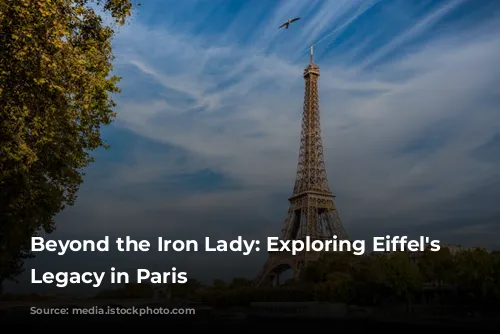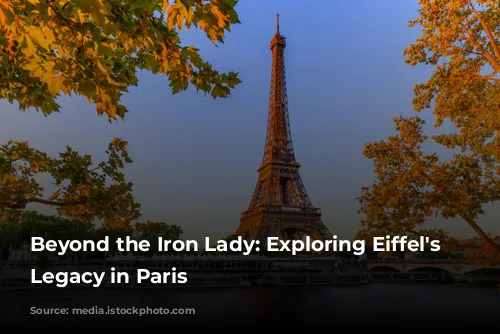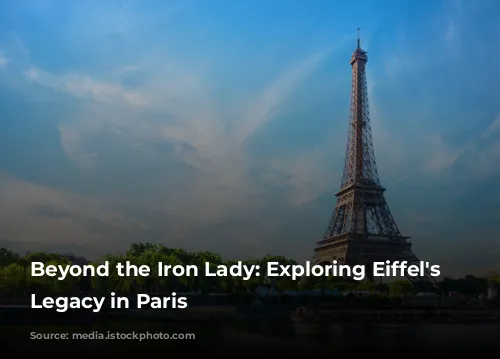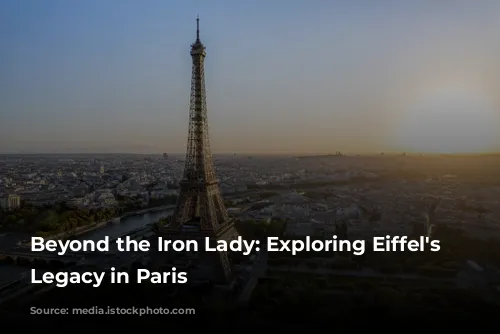Gustave Eiffel, the name synonymous with Paris’s iconic Eiffel Tower, was much more than just a tower builder. He was a visionary civil engineer who left an indelible mark on the city and beyond. This remarkable man, who passed away a century ago, dedicated his life to shaping the landscape with his innovative designs. His prolific career spanned continents, encompassing everything from dams and bridges to lighthouses and even an early attempt at building the Panama Canal.
A Legacy of Structures: From Bridges to Museums
Eiffel’s impact on Paris is evident in numerous surviving structures and works of art. While the Eiffel Tower reigns supreme as his most breathtaking creation, other architectural gems reveal the breadth of his genius and influence. Here’s a glimpse into some of these hidden treasures:
A Walk Through Time: Eiffel’s Bridges and Parks
The Parc des Buttes-Chaumont offers a picturesque escape in the heart of Paris. Eiffel’s elegant footbridge, spanning a tranquil lake to the Île du Belvedere, is a testament to his architectural finesse. This slender iron suspension bridge, painted a rich burgundy hue, stands at 65 meters long. Unfortunately, restoration work on the island is underway, temporarily closing the bridge and its accompanying Roman temple folly until 2025. However, you can still admire the structure from below, or discover the equally charming Eiffel overpass near the park’s western entrance.
The Passerelle de l’Avre, a 24-meter-long cycle and footbridge lined with lampposts, graces the Bois de Boulogne park. This impressive structure, designed by Eiffel and Fulgence Bienvenüe, the “father of the Paris Metro,” was inaugurated in 1893. From this bridge, you can witness the city’s westernmost point, enjoy panoramic views of La Défense’s skyscrapers to the north, and, fittingly, the Eiffel Tower itself. The path leading to the bridge from the Pont de Saint-Cloud metro station is an inviting, tree-lined promenade, dotted with charming houseboats.
Beyond the Tower: Eiffel’s Architectural Contributions
Eiffel’s company played a vital role in crafting the metal frameworks for some of Paris’s most impressive buildings. These include the Palais Galliera fashion museum, the department store La Samaritaine, and the former Calmann-Lévy printing works, now transformed into Le Shack Paris, a dynamic restaurant, club, and coworking space. Eiffel also contributed to the construction of the Notre-Dame-des-Champs church, a masterpiece of architectural elegance in the sixth arrondissement. Eiffel’s innovative iron frame allowed the church to reach unprecedented heights, boasting spacious interiors and expansive windows.
Eiffel’s Global Reach: The Statue of Liberty
Eiffel’s influence extended far beyond Paris, reaching across the Atlantic to New York’s iconic Statue of Liberty. Frédéric Auguste Bartholdi, the sculptor of the statue, sought Eiffel’s expertise for the internal structure. Eiffel devised a unique flexible four-legged pylon, designed to withstand the forces of wind. This ingenious structure became the core of the statue, ensuring its enduring stability. The statue’s components were meticulously crafted in Eiffel’s Parisian workshops before embarking on their transatlantic journey to New York. A captivating replica, one-sixteenth the size of the original, stands proudly within the sprawling Musée des Arts et Métiers. This museum houses a treasure trove of photographs and related objects donated by Bartholdi’s widow.
The Theatre of Dreams: Paradis Latin
Another Eiffel creation graces the Parisian landscape: the Paradis Latin, the city’s oldest cabaret theatre. Located discreetly on a side street north of the Jardin des Plantes, this historic venue boasts a fascinating history. Originally built under the orders of Napoleon Bonaparte in 1802, the theatre was tragically destroyed during the Franco-Prussian War. Eiffel, with his characteristic ingenuity, stepped in to rebuild the theatre, ensuring its revival for the 1889 Paris Exhibition. He incorporated metal columns into the remnants of Paris’s ancient city wall, allowing for a breathtaking cathedral-like ceiling. The Paradis Latin continues to captivate audiences with spectacular shows like L’Oiseau Paradis, an enthralling fusion of aerial acrobatics, burlesque, and comedic elements.
The Eiffel Tower: A Legacy of Engineering Brilliance
The Eiffel Tower, the star of the 1889 Paris Exhibition, stands as Eiffel’s most enduring masterpiece. Although initially slated for demolition after 20 years, this iconic structure was saved due to its invaluable contribution to scientific research. Eiffel’s ingenuity ensured the tower’s legacy as a scientific marvel, hosting a multitude of meteorological and aerodynamics experiments. Today, millions flock to the tower each year, creating a spectacle of anticipation and excitement. A bronze bust of Eiffel by Antoine Bourdelle stands sentinel near the northern pillar, while a special centenary exhibition, “Eiffel – Higher and Higher,” celebrates the tower’s creation.
Eiffel’s Legacy: Beyond Engineering
Eiffel’s fascination with aerodynamics and meteorology led him to establish a research base, the Aérodynamique Eiffel laboratory. Here, he continued to experiment and innovate, contributing to the advancement of these fields. The lab remains an active research center, though public access is typically limited to the annual European Heritage Days.
Eiffel’s Final Resting Place: A View Towards the Tower
Gustav Eiffel’s final resting place lies in the family tomb at the Levallois-Perret cemetery, a suburb northwest of Paris. In a poignant tribute to his legacy, his grave is oriented towards the Eiffel Tower, symbolizing the lasting connection between the man and his most famous creation. A short walk from the cemetery, the site of Eiffel et Cie workshops has been transformed into Parc Gustave-Eiffel, a beautiful space showcasing massive murals depicting the Statue of Liberty, the Garabit viaduct, and the Eiffel Tower.
Eiffel’s story is one of extraordinary innovation and unwavering ambition. He left an indelible mark not only on Paris but on the world, a legacy that continues to inspire and amaze. His name will forever be linked to the Eiffel Tower, a testament to the enduring power of human ingenuity and the transformative impact of visionary engineering.





